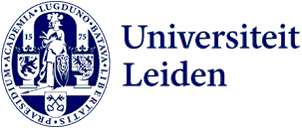
Better treatment of skin diseases thanks to NWA grant of 11.7 million euros
Patients with skin diseases such as eczema and psoriasis, sometimes spend a lifetime searching for the right medication. To help these patients faster and better, scientists across the country are joining forces. The Next Generation ImmunoDermatology (NGID) project, with LACDR professor Robert Rissmann as the coordinator, has received a large grant of 11.7 million euros. With this money, they are conducting research into personalized treatment methods.

In the Netherlands, 2.5 million patients suffer from chronic inflammatory skin diseases. Yet there is currently no treatment method that can help them get the right medicine quickly and efficiently. For now, these patients receive the standard medicine that works most often,' says Rissmann of the LACDR, the medicine research institute of Leiden University. 'The search for the right drug can take years. To speed up that process, Medical University Centers, patient associations, knowledge institutes and pharmacists all over the country are going to collaborate.'
Expertise from 32 parties gathered
In order to provide patients with customized medicine, 32 parties across the country are working together. With all the expertise within the consortium, they are going to measure patients precisely and in many dimensions. 'This includes the work of dermatologists, technologists, biologists, data analysts and communications staff.'
We hope to use biomarkers to predict who will benefit most from which medications
Biomarkers predict which drugs work
To find the right drug for each patient, the researchers first research the diseases thoroughly. 'We do that with very advanced technology. For example, from skin biopsies we can examine exactly which cells and molecules are involved.' Certain substances involved or characteristics that provide information about a disease can act as so-called biomarkers and give valuable information to doctors and researchers.
The ultimate goal is to use such biomarkers to see what treatment the patient should receive. 'We hope to be able to use this to predict who will benefit most from which drugs.'
Dermatology so far underfunded
Right now the search for the right medicine, is not only unpleasant for the patient, but also very expensive. 'Some treatments cost 15,000 euros a year per patient. If you knew in advance that a certain drug doesn't work, you could work much more efficiently and save a lot of money.'
With severe eczema, you can spend nights awake from itching
In the past, there were not always big budgets for large-scale research into dermatological diseases, Rissmann explains. 'In particular, a lot of money goes to research for life-threatening diseases such as cancer. This is understandable, of course, but attention is also needed for skin diseases. The patients may not die from them, but the quality of life is often very low. With severe eczema, for example, you can lie awake for nights because of the itching.'
Using artificial intelligence in the central database
With the powerful consortium and this grant, large-scale research can now take place. 'We are going to register all the results of research in a central database. We can use artificial intelligence to extract a lot of information from that.’
Rissmann himself has multiple functions. As a skin scientist he works at the LACDR, the LUMC and the Centre for Human Drug Research (CHDR). This means that a large part of his role is catalytic: he brings many parties together. 'This NWA proposal lets us dream much bigger than we have done in the past. It is extraordinary that skin research in the Netherlands is receiving such a large grant.'
Infrastructure, clinical trials and sensors consulting
Rissmann and his team will lead the consortium in the coming years. They will do this with infrastructure, advice on clinical studies and sensors that can be used at home to monitor the patient. 'With new sensors like those used in a smartwatch, you can measure very objectively how a patient sleeps, for example. It is therefore my role to investigate effects as objectively and quantitatively as possible. With the NWA grant, we will be working hard in the coming years to collaborate nationally and put individualized treatment into practice.'
Partners within the Next Generation ImmunoDermatology consortium.
Almirall (NL/ Spanje)
Amsterdam Universitair Medische Centra
BIOMAP consortium, EU IMI2 C
ELLnTEC (Zwitserland)
Centre for Human Drug Research (NL)
Clinical Microbiomics (Denemarken)
Erasmus MC FibroTx (Estland)
Hogeschool Arnhem Nijmegen- University of Applied Sciences
Hogeschool Leiden
Huid Nederland
Janssen-Cilag B.V.
Leids Universitair Medisch Centrum
Maastricht University
Maastricht University Medical Center
Maruho (Japan)
Nederlandse Vereniging voor Dermatologie en Venereologie
Nederlandse Vereniging voor Experimentele Dermatologie
Perimed AB (Zweden)
Proefdiervrij
soriasispatiënten Nederland
Radboud Universitair
Medisch Centrum
River Diagnostics
Sanquin
Scibase (Zweden)
Skin Research Institute of Singapore, Innovative Medicines Initiative Stichting Huidlymfoom
Technische Universiteit Delft
Universitair Medisch Centrum Groningen
Universitair Medisch Centrum Utrecht
Universiteit van Amsterdam Universiteit
Leiden Vereniging voor Mensen met Constitutioneel Eczeem
Text: Inge van Dijck
